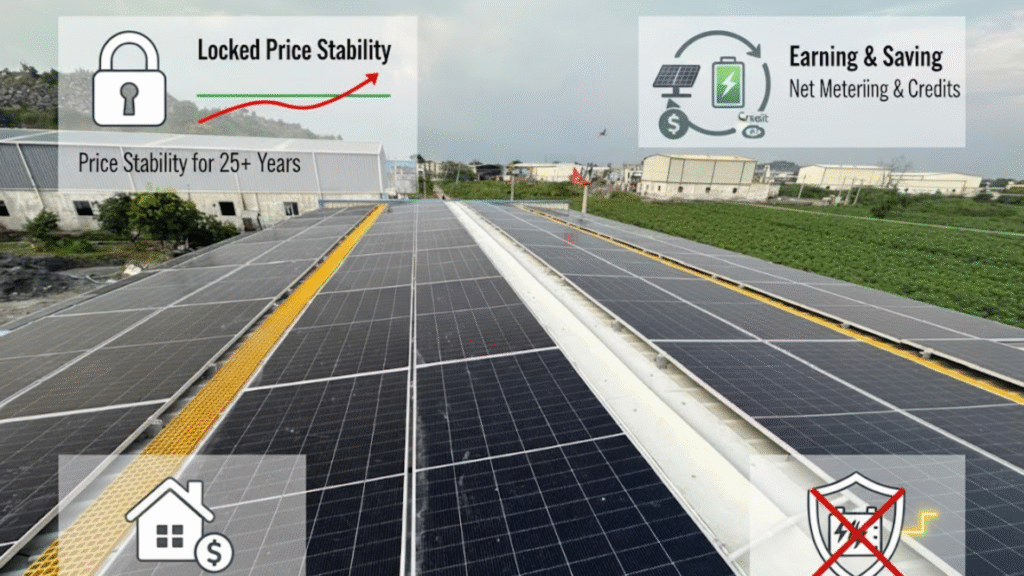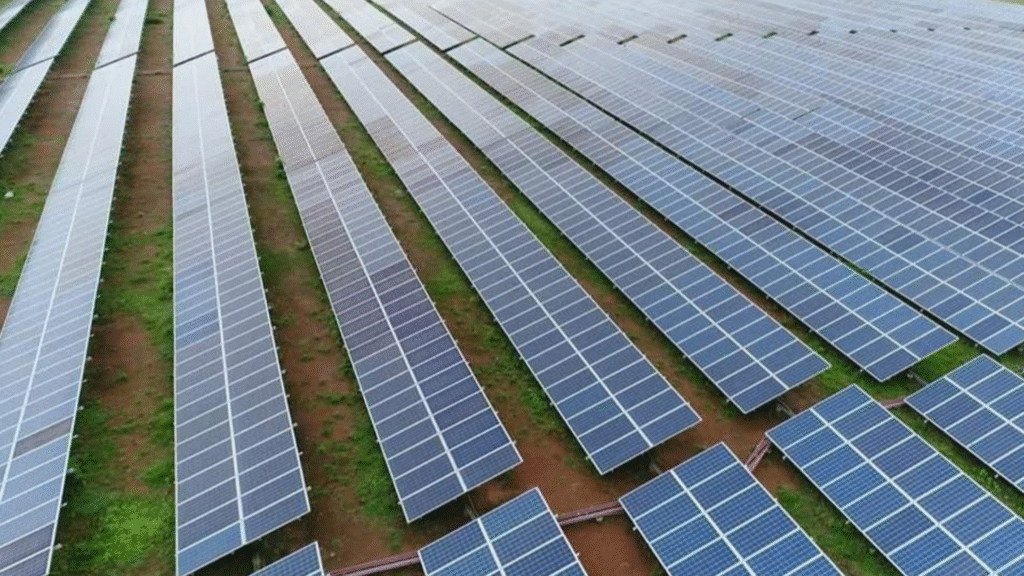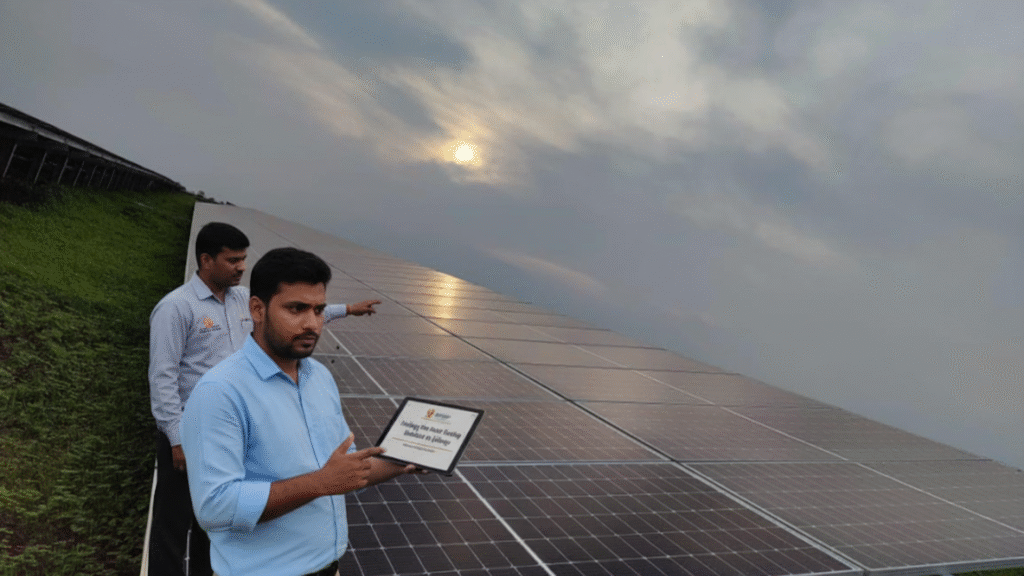When you start looking for the best energy saving ideas for home, you’ll find a lot of great advice. Insulate your attic. Swap to LED bulbs. Seal those leaky windows. These are all vital steps for cutting down your monthly utility bill, and you absolutely should do them.
But if you’re looking beyond the immediate savings—if you’re planning for the next 20 to 30 years of reliable, cost-controlled, and environmentally sound energy—there is one idea that stands head and shoulders above the rest: solar energy.
Beyond the Quick Fix: Understanding the Best Energy Saving Ideas for Home

Many people view solar panels as a major, one-time expense rather than a true energy saving idea. They compare the upfront cost of a solar installation to the relatively small price of a few energy-efficient appliances.
However, this comparison misses the point entirely. Solar is not just about saving the energy you’re already paying for; it’s about replacing the cost of that energy entirely with a system that generates free power for decades.
Think of it this way: putting in a new high-efficiency furnace saves you 10-20% on your heating bill. Going solar can effectively save you 70-100% on your electricity bill—month after month, year after year. That is power.
Why Solar is the Ultimate “Best Energy Saving Idea for Home

Here are the key reasons why solar energy is the single smartest long-term move you can make for your home’s financial and energy future.
1. Locking in Your Electricity Price
Traditional utility rates are unpredictable. They constantly fluctuate and almost always trend upward over time. By installing a solar system, you are essentially pre-purchasing your electricity for the next 25+ years at a fixed, predictable cost (the initial installation price). Once the system is paid off, the electricity it generates is absolutely free.
2. The Power of “Earning” vs. “Saving”
While a new smart thermostat saves you a few dollars by managing your usage, a solar system earns you money. Net metering is the game-changer here. In many areas, if your panels produce more electricity than you use during the day, that excess power is sent back to the grid, and your utility gives you a credit. You are effectively getting paid for the surplus energy you generate.
3. Massive, Proven Increase in Home Value
Unlike replacing a water heater, solar panels are a tangible, highly desirable asset. Studies consistently show that homes equipped with owned (not leased) solar energy systemssell faster and at a premium compared to comparable non-solar homes. It’s an investment that pays you back when you sell.
4. Future-Proofing Against Instability
With the addition of a modern home battery storage system (like a Tesla Powerwall or similar), your solar installation transforms from an energy saver into an energy independence system. When the grid goes down due to storms or outages, your home remains powered, offering security and peace of mind that no other saving idea can match.
Solar vs. Other Top Energy Savers:

To put the long-term financial impact into perspective, let’s compare solar to other excellent, immediate energy saving ideas for home using estimated figures for the Indian market.
| Energy Saving Idea | Initial Cost (Estimated) | Annual Utility Savings (Estimated) | Lifespan/ROI Period |
| Solar Energy System | ₹1,50,000 – ₹3,50,000+ (For a 3kW-5kW system, pre-subsidy) | ₹30,000 – ₹60,000+ | 25+ years (Electricity is free after ROI) |
| Attic/Roof Insulation | ₹50,000 – ₹1,50,000 | ₹8,000 – ₹15,000 | 15 – 20 years |
| New High-Efficiency HVAC | ₹75,000 – ₹1,50,000 (For a 5-Star Split AC to Centralized system) | ₹10,000 – ₹25,000 | 10 – 15 years |
| LED Bulb Swap | ₹2,000 – ₹5,000 | ₹1,500 – ₹3,000 | 10 – 20 years |
Disclaimer: Costs and savings are highly dependent on your specific city, home size, consumption habits, and the availability of central/state government subsidies, which can significantly reduce the initial solar cost.
Checklist: Your Path to Solar Energy

If you are ready to transition from basic savings to true energy independence, here are the first steps to take:
- Assess Your Energy Usage: Review your last 12 months of electricity bills to understand your average consumption (measured in kilowatt-hours or kWh).
- Evaluate Your Roof: Do you have significant, unobstructed southern or western exposure? Is your roof in good condition? (Solar panels last 25+ years, so your roof should too!)
- Research Incentives: Look for local, state, and federal tax credits (like the ITC) that can significantly reduce the net cost of installation.
- Get Multiple Quotes: Contact at least three reputable, local solar installers. Ask detailed questions about warranties, panel efficiency, and maintenance.
The time to start saving for your home’s future is today. The long game is solar.
Frequently Asked Questions (FAQ)
Q: How long does it take for a solar system to pay for itself?
A: The payback period, or Return on Investment (ROI), typically ranges from 6 to 10 years, depending on the upfront cost, local utility rates, and available incentives. Given a lifespan of 25+ years, this leaves a significant period of pure profit from free electricity.
Q: Do I still need to be connected to the grid if I go solar?
A: In most residential cases, yes. The grid acts as a massive, indefinite battery (via net metering). If you want to maintain power during an outage, you would need to install a separate battery storage system alongside your solar panels.
Q: Does solar work well in cloudy or cold climates?
A: Yes! While peak production happens on sunny days, modern solar panels still generate power using diffused light. Cold weather actually increases the efficiency of solar panels, provided there is no heavy snow accumulation covering them.


